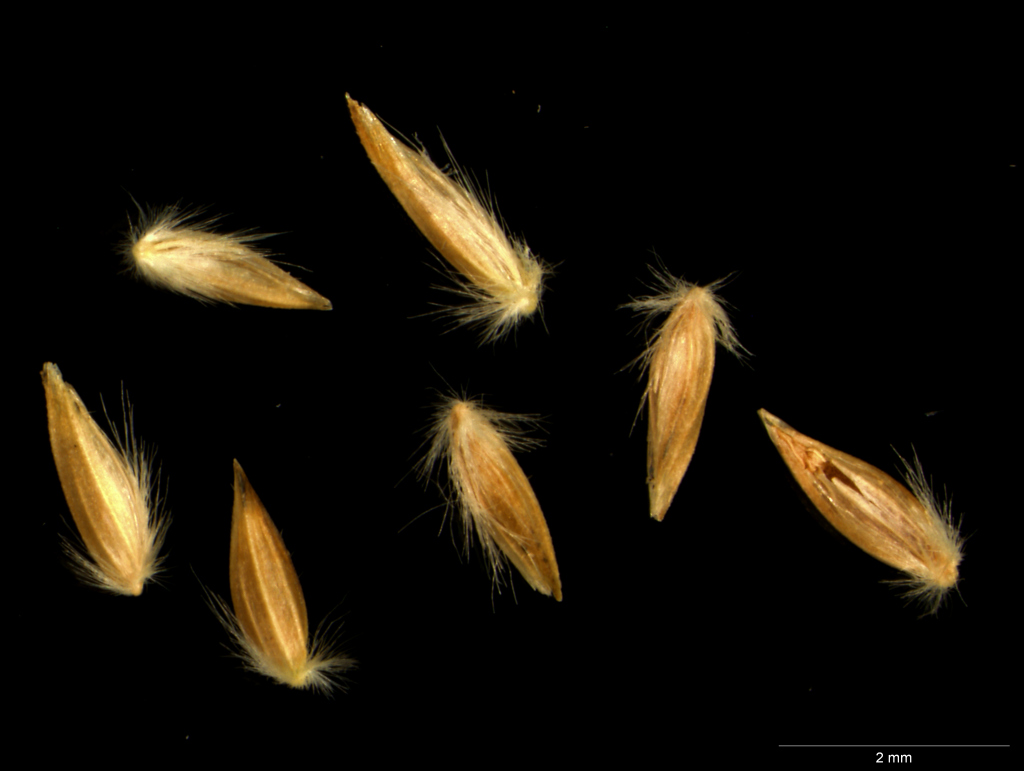Deyeuxia innominata
D.I.MorrisFine, tufted perennial, culms erect, to 40 (but commonly less than 20) cm high. Leaf-blades closely folded, or inrolled, often triangular in section, to 15 (but often c. 6) cm long and c. 0.5 mm diam., glabrous or with a few short, stiff hairs on the upper surface; ligules truncate, 1–2.5 mm long. Inflorescence a narrow panicle 2–8 cm long, with loosely contracted branches. Spikelets 2–3 mm long, usually purplish; glumes acute or bluntish, subequal, scabrous along the keel in the upper part; lemma slightly shorter than to slightly longer than the glumes, acute or obtuse, smooth, barely hardened at maturity, rather prominently 5-nerved, awnless, or minutely awned from just below the apex; awn, if present to 0.5 mm long, not or barely exceeding lemma; callus hairs dense, about half as long as lemma; rachilla bristle c. 1 mm long, plumose, with hairs nearly reaching the apex of the lemma. Flowers Jan.–Mar.
EGU, HSF, HNF, HFE, VAlp. Also NSW, Tas. Occurs in damp grassland and heathland communities virtually throughout the alps (e.g. Lake Mountain, Baw Baws, Mt Buller, Snowy Range, Mt Buffalo, Bogong High Plains, Nunniong Plateau, Cobberas) but not common.
Walsh, N.G. (1994). Poaceae. In: Walsh, N.G.; Entwisle, T.J., Flora of Victoria Vol. 2, Ferns and Allied Plants, Conifers and Monocotyledons, pp. 356–627. Inkata Press, Melbourne.
 Spinning
Spinning

